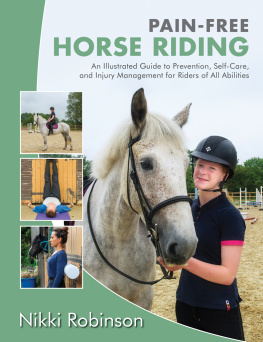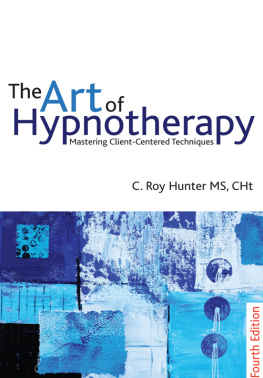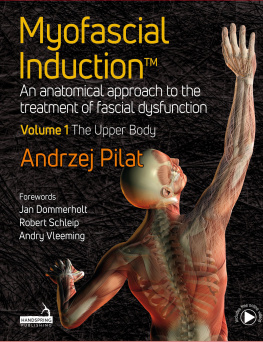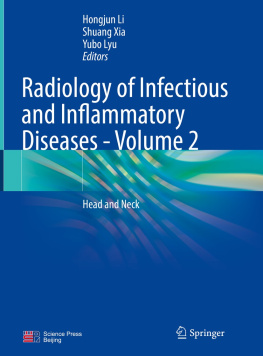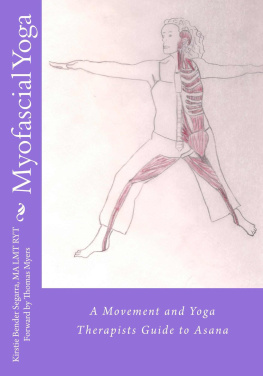Advanced Myofascial Techniques
Til Luchau
Volume 2
Neck, head, spine and ribs
Volume 2
Advanced Myofascial Techniques
Neck, head, spine and ribs
Til Luchau
Foreword by
Thomas W Myers
HANDSPRING PUBLISHING LIMITED
The Old Manse, Fountainhall,
Pencaitland, East Lothian
EH34 5EY, Scotland
Tel: +44 1875 341 859
Website: www.handspringpublishing.com
First published 2016 in the United Kingdom by Handspring Publishing
Copyright Til Luchau 2016
Illustration copyrights as indicated at the end of each chapter
All rights reserved. No parts of this publication may be reproduced or transmitted in any form or by any means, electronic or mechanical, including photocopying, recording, or any information storage and retrieval system, without either the prior written permission of the publisher or a license permitting restricted copying in the United Kingdom issued by the Copyright Licensing Agency Ltd, Saffron House, 6-10 Kirby Street, London EC1N 8TS.
ISBN 978-1-909141-17-9
British Library Cataloguing in Publication Data
A catalogue record for this book is available from the British Library
Library of Congress Cataloguing in Publication Data
A catalog record for this book is available from the Library of Congress
Notice
Neither the Publisher nor the Author assumes any responsibility for any loss or injury and/or damage to persons or property arising out of or relating to any use of the material contained in this book. It is the responsibility of the treating practitioner, relying on independent expertise and knowledge of the patient, to determine the best treatment and method of application for the patient.
Commissioning Editor Sarena Wolfaard
Design direction and Cover design by Bruce Hogarth, KinesisCreative
Artwork by PrimalPictures unless otherwise indicated
Project Management by NPM Ltd
Index by Aptara
Typeset by DSM Soft
Printed in the Czech Republic by FINIDR
The
Publishers
policy is to use
paper manufactured
from sustainable forests
|
Contents
It is perhaps unfair to invoke the authors younger self when introducing a book from his later years, but I remember so vividly the impression Til Luchau made when first I met him more than 20 years ago. Whip-thin, with such an offhand air of quiet and calm surrounding his movements, his low and understated voice it all suggested someone, one might infer from a first glance, not quite up to the energetic job of teaching for which he was auditioning.
A second look, however, into the probing assessment emanating from his clear green eyes was enough to reveal that the first laconic impression is merely a veneer, a gentle Gen X presentation covering for a fiercely inquiring and stubbornly thorough Renaissance mind. A mind willing to generously entertain the intuitions and inclusiveness of alternative medicine, but unwilling to settle for complacent half-truths that too often take the place of the complex totality of clinical experience.
Also in his favor, following the example of Buckminster Fuller and John Lilly, Til has always used himself as his own scientific guinea pig, living out his questions into the answers so clearly presented here. From deep yoga practice to juggling devil sticks, Til has played with his own mind and body, constantly using himself to test the edges of flexibility and coordination, practicing the preparation, differentiation, and integration fractals so integral to mastering the processes described in this book.
Needless to say, Til was definitely up to the job of teaching, and I subsequently bequeathed the entire program to his competent hands. In the intervening years, his native skills have been further honed by continual and varietal practice. The detailed research underlying these volumes is testimony to his assembly and careful sifting over time of the evidence around the questions that surround contemporary manual therapy.
In this series, Til makes liberal and salient use of the un-traditional views of anatomy now available through electronic media, exposing relationships not evident in the standard texts. The photographs included not only show the techniques as they apply to the client, but also where the intent is directed vis-a-vis the clients skeleton a boon to accurate application across different body types. Charts, summaries, and study guides only add to the clarity of the presentation for the mid-level or advanced manual therapist.
I am very happy to see that this second volume covers the vestibular system, which is sadly underserved elsewhere, as well as dealing openly and fairly with the controversies surrounding the psoas major and environs. Other corners at the edge of manual therapys reach, such as the diaphragm, rib heads, mesentery and deeper structures of the neck are dealt with in a practical but sophisticated manner.
As Til states, a book is a good but limited tool, so augment the information from here with his video presentations, or enjoy the mature version of the unique man I saw so many years ago by going to Tils classes. You can rely on what you find, because his innate confidence is such that he feels no ned to overstate his case or claim cures or causation. The spirit of this book is exploration, an informed exploration that encourages the clients body to heal itself, and evokes the clients desire to retain the renewed access to movement.
And most of all, Tils work requires the practitioner to stay awake and aware, the single most important factor in a long and satisfying practice.
Thomas Myers
Author of Anatomy Trains
Clarks Cove, Maine
January 2016
The acknowledgements in this books first volume thanked 37 people, and yet still didnt manage to include everyone who had helped that books creation. Because these two volumes were written together, each of the people listed there should, by rights, be thanked once more.
Author, practitioner, and fascial researcher Robert Schleip PhD should again receive special mention for the inspiration, encouragement, and support he has so freely given to me, and to so many others in our field. Thomas Myers, Jan Sultan, Art Riggs, Erik Dalton, and many other mentors and colleagues have also lent invaluable and direct support.
Leslie Young PhD and Darren Buford hosted many of the first drafts of this material in Massage & Bodywork magazine, as did Anne Williams via ABMPs online webinar series.
I am deeply indebted to the many who generously gave permission or granted license to use their images. Primal Pictures deserves special mention. They are listed in each chapters image credits, but all deserve a special thanks for sharing their vision and hard work.
Kate Dennington and Patrick Dorsey both worked especially hard on the first-draft versions of the study guide questions and key points, and helped make the work applicable to day-to-day practice. Advanced-Trainings.com faculty Bethany Ward, Larry Koliha, George Sullivan, Chris Pohowsky, and Ellyn Vandenberg all contributed important ideas, editing, dialog, and support, as did the international community of colleagues, teaching assistants, hosts, and students engaged in this work, such as Carmen Rivera in San Juan, Puerto Rico, Bibiana Badenes in Benicassim, Spain, Cheryl LoCicero in Edmonton Alberta, Canada, Simone Baianu in San Francisco, California, Jasmine Blue and East West College in Portland, Oregon, as well as many others.


